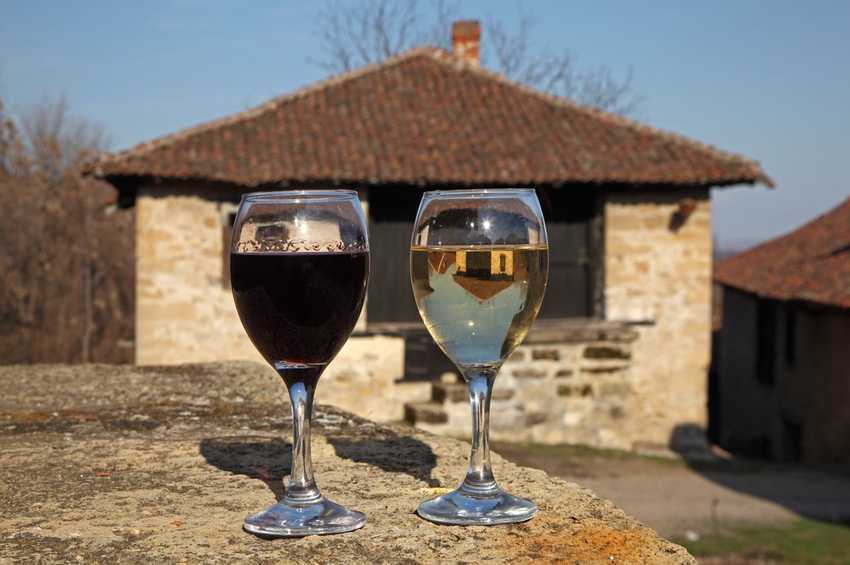
A magical weekend in eastern Serbia
Author: Danijela Okrajnov
Vineyards, wine cellars, wine - these are the first associations for the eastern part of Serbia. A sunny region with sweet grapes of various types, really justifies the term "wine region". For the wine lovers the journey to these areas is a delight, both in flavors and scents, as well as in the "eye-catching" natural beauties. To me, the strongest experience was imprinted by the nature and the beautifull slopes under the vine. The summer rays of the sun illuminated the vineyards and it seemed as the leaves were luminous.
When traveling around these areas, you should not miss the visit to the monastery of Bukovo. There are three stories about the origins of this monastery. According to the first, founder of the monastery is King Milutin and it was built at the end of the 13th century. According to the second, the monastery was erected by St. Nikodim Tismanski in the second half of the 14th century, and on the basis of the third story, the monastery dates back to the 15th century and the ktitor is one of the Timok-Krajina noblemen. Bukovo‘s unique feature is the cultivation of vines and winery. Namely, the monastic fraternity has erected a unique plantation of "black tamjanika", and with that project the ancient grape variety has been preserved from oblivion and created the basis for the creation of a new, original Serbian wine. In addition to wine, the fraternity produces high quality brandy and honey.
A very nice surprise for me was Matalj Winery. In addition to the tasting of five excellent wines, the extremely friendly hosts welcomed us with a rich and tasty snack in the form of various local specialties. The well-known and award-winning wine of this winery is Kremen - Cabernet Sauvignon. This wine, rust ruby, was obtained after 12 months of aging in barrels.
When we talk about the wines of eastern Serbia, the Rajačke pimnice are inevitable. This complex of wine cellars not far from the village of Rajac, originated in the 18th century. The complex consists of stone houses with large basements that are full of barrels in which "lies" wine. These stone houses, (which are) more than two hundred, make up a single settlement with streets and squares. These are beautiful and masterfully precisely built houses of yellow stone, mostly square shapes with large doors. The imagery is complemented by nicely arranged small windows and a deep buried rear wall that provides a basement temperature and humidity suitable for storing wines. As a pearl decoration, there is a red roof covered with red keramides. Both the outer appearance and the function of the cellars are in perfect harmony with the environment. As we had some free time, we took the opportunity to walk through the woods leading to the village of Rajac. Although it was a summer day, it was pleasant here. The light breeze and the song of the birds made us feel peaceful. The air was scented. We circled once more the stone houses and arrived at the destination. Namely, the owners of several cellars have customized their reception facilities. Our host gave us an unforgettable time and a real "explosion" of senses. The wine was served in "pretty" amounts, but with plentiful food it did not much affect the "power of perception". Of course, we enjoyed the music, too.
In this hopeful note, I conclude the wine story!
How we are located in eastern Serbia is definitely a must visit to the site of Felix Romuliana. This magnificent, ancient palace was the residence of the Roman emperor Gaius Valerius Maksimilian. He was born in nowadays Serbian territory and he was Diocletian's son-in-law.
Some parts of the floor‘s mosaics are exceptionally well-preserved and give insight into the work of the exceptional artist. Slender white columns around us have made it easy for me to imagine how this building might have looked like as a whole, really long ago. I close my eyes and dwell into my imagition. I imagine this place filled with contemporary inhabitants, fragrances, sounds ...
In the National Museum in Zajecar, part of the exhibition is made of objects brought from the site of Felix Romuliana, which facilitates to further our understanding into the life of that time.
The most famous city of this part of Serbia is definitely Negotin, where we visited the birthplace of the greatest Serbian composer from the middle of the 19th century Stevan Mokranjac, Konak of Prince Todorce, built in the middle of the XIX century and which represents the oldest town house in Negotin, and today houses the museum of Hajduk Veljko. We also visited the memorial room of Djordje Stanojevic, born at Negotin, a contemporary and great friend of Nikola Tesla.
This very fulfilling weekend was completed by visiting Rajko's cave, which was discovered at the end of the 19th century by our famous geographer Jovan Cvijić. The path to the cave itself is very vivid. It passes along the shores of Mali Pek and the lake Veliki Zaton. According to what is now known, the halls of Rajko's cave are over two kilometers long. This is truly an artwork created by nature itself. Cave jewelry resembles the forms created by man, the artist, and in some parts of the cave complex is really massive. In one passage it seemed like I was passing through the hallway of a palace, next to the beautiful, glittering pillars.
Program for this excursion: https://www.serbianadventures.com/en/adventure/view/130/magical-eastern-serbia-rajacke-pimnice-and-felix-romuliana-2-days
